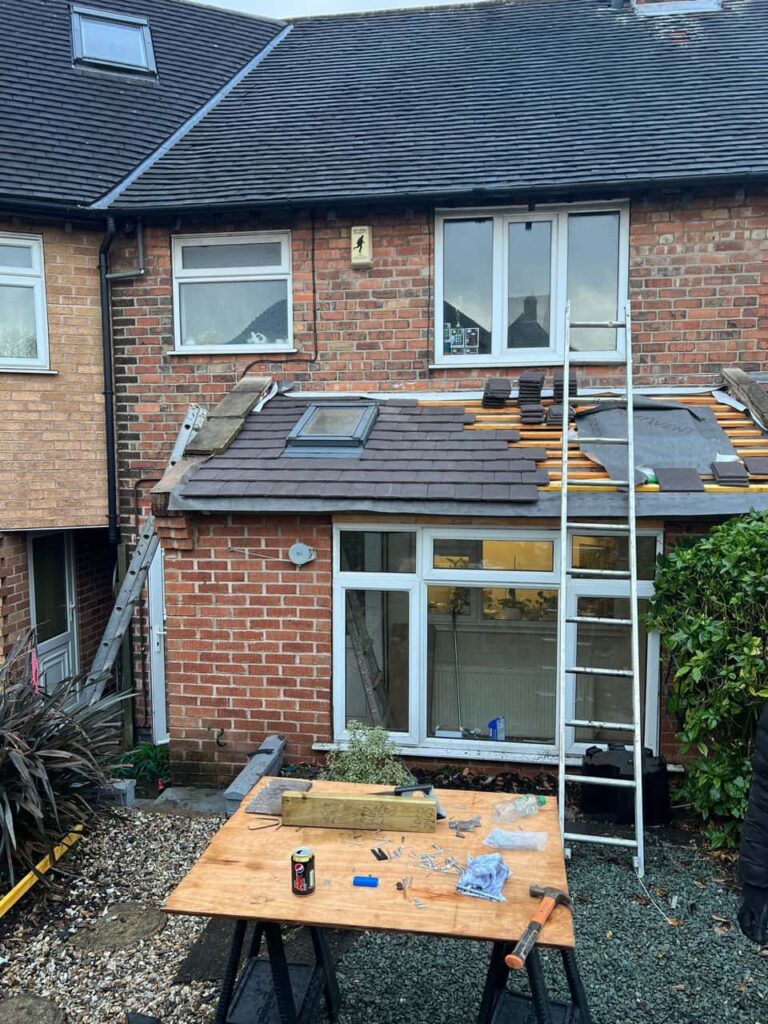Introduction: A well-maintained roof is crucial for your home’s overall health and safety at Oldbury Roofing Repairs. While many homeowners focus on the visible aspects of roofing, such as shingles and tiles, roof ventilation is a critical factor often overlooked. Proper ventilation plays a vital role in maintaining the integrity and longevity of your roof and ensuring a comfortable living environment. In this blog post, we’ll delve into why ventilation is essential for roof health and provide tips for properly ventilating your roof.
What Is Roof Ventilation?
Roof ventilation involves installing systems to ensure a steady airflow through your roof and attic spaces. The primary purpose is to regulate temperature and moisture levels, preventing potential issues from poor ventilation. Effective roof ventilation typically includes a combination of intake and exhaust vents to facilitate air movement.
Benefits of Proper Roof Ventilation
1. Prevents Heat Build-Up
In the summer, excessive heat can accumulate in your attic if ventilation is inadequate. This heat build-up can cause several issues:
- Increased Cooling Costs: Excessive heat in the attic can transfer to your living spaces, causing your air conditioning system to work harder and increasing energy bills.
- Roof Material Damage: Prolonged exposure to high temperatures can cause roofing materials to warp, crack, or become brittle, leading to potential damage.
Proper ventilation helps to expel hot air from the attic, keeping your home cooler and reducing the strain on your cooling system.
2. Reduces Moisture Accumulation
Moisture build-up in the attic can lead to several problems:
- Mould and Mildew Growth: High humidity levels can promote the growth of mould and mildew, which can damage your roof structure and affect indoor air quality.
- Wood Rot: Excess moisture can lead to wood rot in the roof structure, compromising its strength and stability.
Effective ventilation helps to control humidity levels by allowing moisture-laden air to escape, reducing the risk of mould, mildew, and wood rot.
3. Extends Roof Lifespan
A well-ventilated roof can significantly extend the lifespan of your roofing materials. By controlling temperature and moisture levels, ventilation reduces the likelihood of premature wear and tear on your roof, helping you avoid costly repairs and replacements.
4. Improves Energy Efficiency
Proper ventilation contributes to your home’s overall energy efficiency. By maintaining a balanced temperature and reducing moisture levels, your heating and cooling systems operate more efficiently, lowering energy bills.
Types of Roof Ventilation Systems
There are several types of roof ventilation systems, each serving a specific purpose:
1. Ridge Vents
Ridge vents are installed along the peak of your roof and allow hot air to escape from the attic. They work with soffit vents to create a continuous flow of air.
2. Soffit Vents
Soffit vents are installed in your roof’s eaves, allowing cooler air to enter the attic. They are essential for creating the intake airflow needed for effective ventilation.
3. Gable Vents
Gable vents are placed in the gable ends of your home and facilitate air movement by allowing hot air to escape from the attic.
4. Static Vents
Static or roof vents are installed on the roof surface and provide a passive method for escaping hot air. They do not have moving parts and rely on natural convection.
5. Power Vents
Power vents are mechanical ventilators that use electric fans to expel hot air from the attic. They are particularly useful in homes with limited natural ventilation.
Tips for Ensuring Proper Roof Ventilation
To ensure your roof is adequately ventilated, follow these tips:
1. Consult a Professional
Consult a professional roofing contractor if you need more clarification about your roof’s ventilation needs. They can assess your current ventilation system and recommend any necessary improvements.
2. Regular Inspections
Regularly inspect your roof and attic to ensure that ventilation systems are functioning correctly and are free of obstructions.
3. Clear Debris
Keep vents, such as leaves and branches, free of debris blocking airflow. Regular cleaning helps maintain optimal ventilation performance.
4. Check for Proper Insulation
Ensure your attic is insulated to prevent heat transfer and maintain effective ventilation. Poor insulation can undermine the benefits of a well-ventilated roof.
Conclusion: Proper ventilation is a crucial aspect of roof health that should be noticed. By maintaining an effective ventilation system, you can prevent heat build-up, reduce moisture accumulation, extend your roof’s lifespan, and improve your home’s energy efficiency.
Call us on: 0121 312 1498
Click here to find out more about Oldbury Roofing Repairs
Click here to complete our contact form and see how we can help you with your roofing needs.

